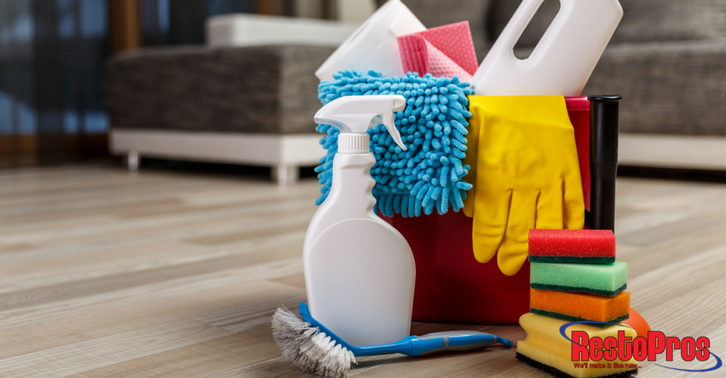 Finding mold in your home is always a disheartening event. Whether it’s hiding in the corner of the basement or creeping out from behind wallpaper, a little mold can turn into a big ordeal very quickly. While we advise you to always seek professional remediation services whenever a mold infestation is larger than one or two square feet (there’s likely more than that too), anything smaller can be dealt with some careful home cleaning. But what if you want to avoid professional cleaners are harsh soaps? Lucky for you, there are alternatives!
Finding mold in your home is always a disheartening event. Whether it’s hiding in the corner of the basement or creeping out from behind wallpaper, a little mold can turn into a big ordeal very quickly. While we advise you to always seek professional remediation services whenever a mold infestation is larger than one or two square feet (there’s likely more than that too), anything smaller can be dealt with some careful home cleaning. But what if you want to avoid professional cleaners are harsh soaps? Lucky for you, there are alternatives!
NOTE: As always, before cleaning any mold, no matter how small the spread is, be sure to wear protective goggles, gloves, clothes, and a mask to prevent skin, eye, and lung irritation.
Use Vinegar
This is the default cleaning tool of homes across the United States. Vinegar is effective and helps to deodorize as it cleans. From sink drains to mold and mildew, vinegar is by far one of the most effective natural cleaners available.
Start by spraying white vinegar over the affected area. Let the vinegar sit for a few hours before scrubbing it away with a warm brush. Be sure to rinse and dry the area thoroughly after cleaning.
Tea Tree Oil
While not as well known, tea tree oil is useful for cleaning up small spots of mold. Start by mixing 1 cup of water and 1 teaspoon of tea tree oil. Once mixed, use a spray bottle to apply it to the mold. Let it sit for 1 hour, then wipe it away. Again, be sure to dry the area thoroughly when you’re done cleaning.
Hydrogen Peroxide
Used for home cleaning and some first aid, many homes still have a bottle of hydrogen peroxide sitting in a cabinet. If you mix 2 parts water to 1 part 3% hydrogen peroxide, you get a quality mold cleaner. Place the mix into a spray bottle and apply it thoroughly to the affected area. Let it sit for 5-10 minutes and scrub it away with a brush. While this method is faster than using vinegar, you’re more likely to have a bottle of white vinegar in your home than you are hydrogen peroxide.
Baking Soda
Use a 1:1 ratio (50%) mix of baking soda and water. Apply the paste over the mold, be careful of upsetting mold and spreading spores. Scrub it away with warm water and a scrub brush. If anything is left, reapply until clean.
Traditional Cleaning
If all else fails, use warm, soapy water to clean away the infected area. Allow the surface to dry and repeat the process. Any fabrics or clothes should be washed separately from other clothing. Use warm water and detergent, then allow the fabric to dry.
Be sure to ventilate any rooms where mold was found and keep the room as dry as possible. Clean up any water spills and use a desiccant or dehumidifier to remove excess moisture from the room. Monitor the area closely for the next week to make sure that the infestation doesn’t return. Finally, if an item does not appear salvageable, toss it immediately. Holding onto a mold-ridden item that you can’t save will only allow more spores to spread. It’s better to sacrifice one item than to lose everything when the mold infestation spreads to your walls and other belongings. And don’t forget to find the original source of the mold. Whatever caused it in the first place should be removed immediately to prevent future outbreaks!
Don’t forget to follow RestoPros on Facebook, Twitter, LinkedIn, and Google+ for new Updates, News, and Discounts.
